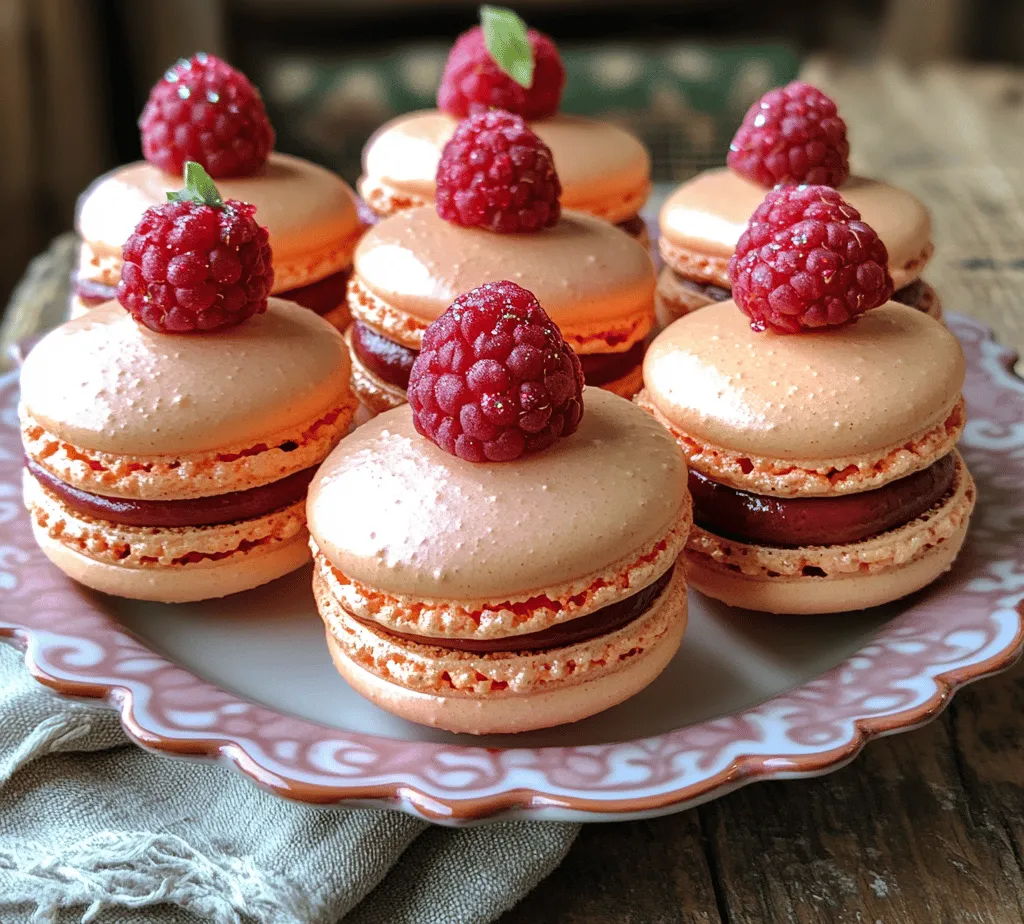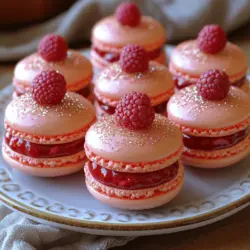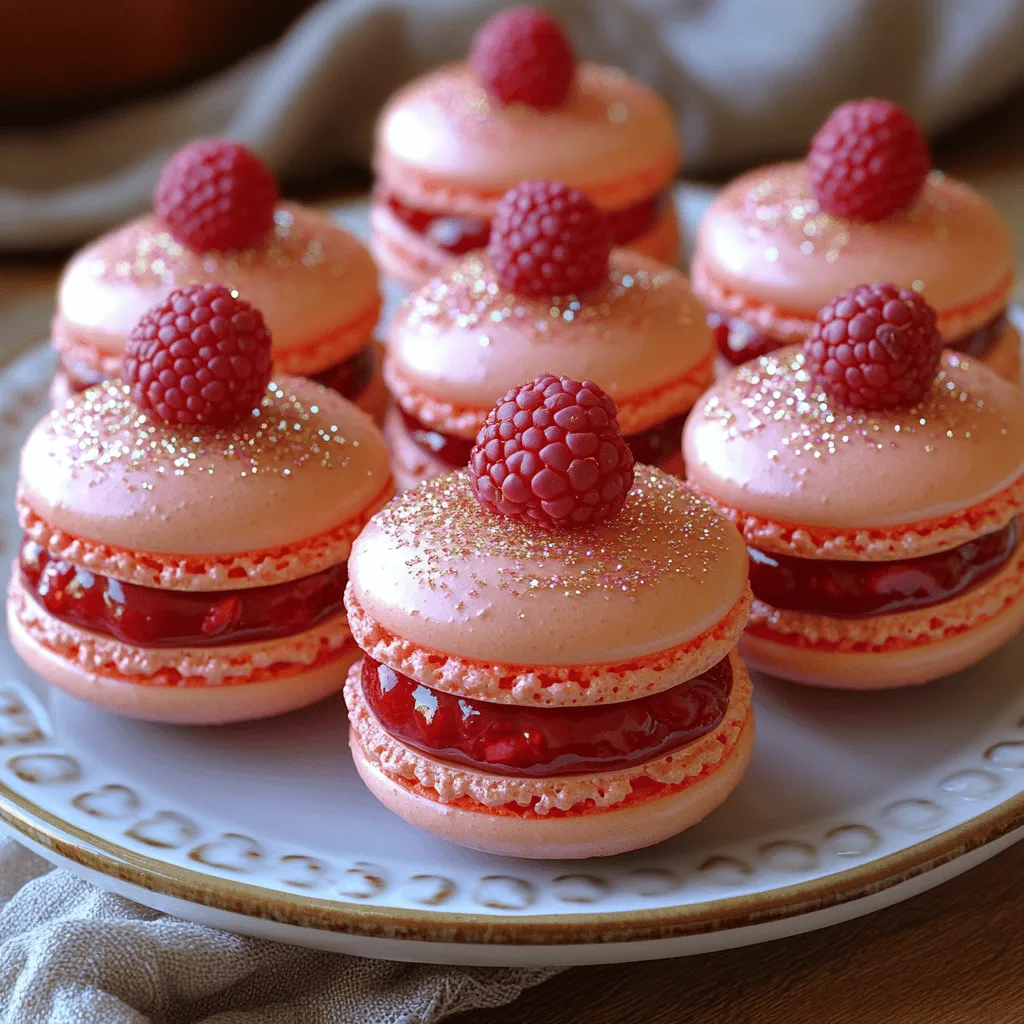Introduction
Macarons are a celebrated French pastry, known not just for their delicate texture and vibrant colors but also for their unique ability to charm anyone who takes a bite. These small, round cookies, made from almond flour, egg whites, and sugar, are often filled with ganache, buttercream, or jam, making them a delightful treat for any occasion. Among the various types of macarons, *Sweetheart Macarons* have gained a special place, particularly during romantic occasions like Valentine’s Day, anniversaries, or wedding celebrations. Their heart-shaped design and the ability to customize fillings and colors make them an ideal choice for expressing affection.
Mastering the art of macaron-making is both a science and a craft. While the ingredients may seem simple, the technique involved in creating perfect macaron shells and fillings requires precision and practice. In this article, we will delve into the delightful world of Sweetheart Macarons, exploring their history, the difference between macarons and macaroons, and the essential ingredients that make up these heavenly treats. We will also provide a step-by-step guide on preparing the macaron shells, ensuring you have all the tools you need to impress your loved ones with this exquisite confection.
Understanding Macarons
Historical Background of Macarons
The history of macarons dates back to the Middle Ages, with origins believed to be in Italy. The word “macaron” comes from the Italian word “maccarone,” which means “to crush” or “to beat,” referring to the method of grinding almonds. The pastry made its way to France in the 16th century when Catherine de Medici married Henry II. It was during this time that macarons began to gain popularity, particularly in the city of Paris.
The macaron we know today is a product of evolution. Originally, it was a simple almond meringue cookie. Over the years, French chefs began experimenting with flavors, fillings, and colors, leading to the creation of the modern macaron, which features two delicate shells sandwiched around a luscious filling. Today, macarons are not only a staple in French patisseries but have also gained immense popularity worldwide, with various adaptations and regional specialties emerging.
Differences Between Macarons and Macaroons
It is essential to clarify the distinction between macarons and macaroons, as they are often confused but are entirely different confections. Macarons are the delicate French cookies made with egg whites, almond flour, and sugar, characterized by their smooth, glossy shells and airy texture. They come in a variety of flavors and colors, often filled with ganache, buttercream, or fruit preserves.
On the other hand, macaroons are a denser, chewier coconut-based treat. Made primarily from shredded coconut, egg whites, and sugar, macaroons are typically baked into small mounds or balls. They can be dipped in chocolate or left plain. While both treats share a similar name and can be delicious, their textures, flavors, and ingredients set them apart.
Popularity and Variations Around the World
Macarons have become a symbol of French culinary excellence, but their popularity has spread globally, leading to various interpretations. In the United States, for example, many bakeries have embraced the macaron trend, offering innovative flavors like matcha, lavender, and even savory options. In Asia, particularly in places like Hong Kong and Japan, macarons have been infused with local flavors and aesthetics, showcasing a fusion of culinary cultures.
Moreover, macarons have become a popular choice for special occasions, weddings, and corporate events, thanks to their elegant appearance and customizable nature. The rise of social media platforms has further propelled their fame, with visually stunning images of macarons creating a buzz online and inspiring home bakers to try their hand at making these confections.
Ingredients Breakdown
Creating Sweetheart Macarons requires attention to detail, especially when it comes to selecting and preparing the ingredients. Below is a detailed description of each component necessary for crafting the perfect macaron shells and raspberry buttercream filling.
Ingredients for Macaron Shells
1. Almond Flour: The key ingredient in macarons, almond flour provides the necessary structure and flavor. It is crucial to use finely ground almond flour for the best texture. Coarse almond flour can lead to grainy macarons, which can crack during baking.
2. Powdered Sugar: This ingredient sweetens the macarons while also contributing to their smooth texture. Powdered sugar should be sifted together with almond flour to eliminate clumps, ensuring uniformity in the batter.
3. Egg Whites: Egg whites are the backbone of macaron shells, providing the necessary lift and structure. It is recommended to use aged egg whites, which can help in achieving a stable meringue. Aging egg whites involves separating them from the yolks and allowing them to sit in the fridge for 24 hours before use.
4. Granulated Sugar: This sugar is added to the whipped egg whites to create a stable meringue. The granulated sugar should be added gradually while whipping the egg whites until stiff peaks form, resulting in a glossy meringue.
5. Food Coloring: While optional, food coloring can enhance the visual appeal of your Sweetheart Macarons. Gel food coloring is preferred over liquid coloring, as it does not alter the consistency of the batter. Choose colors that complement the romantic theme, such as soft pinks, reds, or even pastels.
Ingredients for Raspberry Buttercream Filling
1. Unsalted Butter: The base of the buttercream, unsalted butter adds creaminess and richness. Ensure that the butter is at room temperature for easy mixing and smooth texture.
2. Powdered Sugar: Just like in the macaron shells, powdered sugar is used to sweeten and thicken the buttercream filling. Sifting the sugar helps to prevent lumps and ensures a smooth consistency.
3. Raspberry Puree: Fresh or frozen raspberries can be blended and strained to create a flavorful puree. This ingredient not only adds a delightful fruity flavor but also a beautiful pink hue to the filling.
4. Heavy Cream: Adding heavy cream to the buttercream filling enhances its creaminess and smooth texture. It can also help adjust the consistency of the buttercream, making it easier to spread between the macaron shells.
5. Optional Garnishes: For an extra touch of elegance, consider garnishing your Sweetheart Macarons with edible glitter, heart-shaped sprinkles, or additional raspberry pieces. These small details can elevate the overall presentation and make your macarons even more appealing.
Preparing the Macaron Shells
Now that we have a firm grasp on the ingredients, it’s time to dive into the preparation process. Making macaron shells requires precision and attention to detail, but with a bit of practice, you can achieve delightful results.
Step 1: Prepping the Almond Mixture
Begin by combining the almond flour and powdered sugar in a bowl. It’s essential to sift this mixture to remove any lumps, as even the tiniest lumps can result in uneven shells. Sifting ensures that the dry ingredients are well mixed and ready to blend with the egg whites.
Step 2: Whipping Egg Whites
In a clean, dry mixing bowl, begin whipping the aged egg whites. Start at a low speed to create foam, gradually increasing the speed to medium as the whites begin to froth. Once the egg whites reach soft peaks, gradually add the granulated sugar. Continue whipping the egg whites until they reach stiff peaks, which should take about 5-7 minutes. The meringue should be glossy and hold its shape well; it’s vital not to over-whip, as this can lead to a grainy texture.
Step 3: Folding in the Dry Ingredients
Once the meringue is ready, carefully fold in the sifted almond flour and powdered sugar mixture using a rubber spatula. It’s important to use a gentle folding motion to avoid deflating the meringue. The goal is to incorporate the dry ingredients until just combined, resulting in a smooth and slightly thick batter. You can add food coloring at this stage, folding it in gently until the desired color is achieved.
Step 4: Achieving the Right Consistency
To check the consistency of the batter, perform the “figure-eight” test: lift the spatula and let the batter fall back into the bowl. It should flow smoothly and form a ribbon that holds its shape for a few seconds before disappearing. If the batter is too thick, you can gently fold in a little more egg whites until the right consistency is reached.
Step 5: Piping the Macaron Shells
Prepare a piping bag fitted with a round nozzle and fill it with the macaron batter. On a baking sheet lined with parchment paper, pipe small circles, leaving enough space between each circle to allow them to spread slightly. Aim for uniform sizes for a polished finish.
Step 6: Resting the Macarons
Once piped, let the macarons sit at room temperature for about 30-60 minutes, allowing them to develop a skin. This resting period is crucial as it helps prevent the shells from cracking during baking. You’ll know they’re ready when you can touch the tops lightly, and they feel dry to the touch.
Step 7: Baking the Macarons
Preheat your oven to 300°F (150°C). Bake the macarons for 15-20 minutes, rotating the baking sheet halfway through to ensure even baking. The shells are done when they can be lifted off the parchment paper without sticking and have formed a delicate foot around the base.
With these initial steps, you’re well on your way to creating stunning Sweetheart Macarons. The process may take some practice, but the result will be beautifully delicate cookies that are perfect for sharing with your loved ones on special occasions. Stay tuned for the next part of this article, where we will delve into the preparation of the raspberry buttercream filling and assembly of these delightful treats.

Tips for Piping the Macaron Shells
Piping the macaron shells can be a delicate task, but with practice and the right techniques, you can achieve perfectly shaped cookies. Start by preparing your piping bag with a round tip, usually a 1/4-inch wide. This size allows for a good flow of batter without making overly large shells. When filling your piping bag, make sure to leave enough space at the tip to pipe cleanly without creating a mess.
When you’re ready to pipe, hold the bag straight above the parchment paper and apply even pressure while moving the tip in a circular motion to form a round shape. Aim for a diameter of about 1.5 inches—this is the ideal size for macarons. To ensure uniformity, you can print a template with circles on parchment paper to serve as a guide beneath your baking sheet.
Ideal Size and Spacing Between Macarons
Maintaining consistent size and spacing is crucial for baking macarons. Aim for each macaron shell to be about 1.5 inches in diameter, as previously mentioned. With this size, you should space the shells at least 1 inch apart on the baking sheet to allow for slight expansion during baking. This spacing prevents the macarons from merging together, ensuring you get distinct, beautiful shells.
Importance of Tapping the Baking Sheets to Release Air Bubbles
After piping your macarons, let them sit for a few moments to allow any surface bubbles to rise to the top. Then, gently tap the baking sheets against the counter. This tapping action is essential as it helps release any trapped air bubbles beneath the surface, which can cause unsightly cracks during baking. Don’t be too forceful; a few gentle taps will suffice to ensure a smooth surface.
Explanation of the Drying Process and Its Significance
One of the most critical steps in making macarons is the drying process. After piping, allow the macarons to rest at room temperature for 30 to 60 minutes, or until the tops feel dry to the touch. This drying period forms a skin on the macarons, which is essential for developing that iconic “foot”—the ruffled edge that forms at the base during baking. Skipping this step can result in flat, misshapen cookies, so be patient!
Baking the Macarons
Guidelines for Preheating and Baking Temperatures
Preheat your oven to 300°F (150°C). The temperature is crucial for baking macarons, as too high a temperature can cause them to crack, while too low can prevent them from rising properly. It’s advisable to use an oven thermometer to ensure accuracy, as home ovens can often be off from their indicated temperatures.
Signs to Look for When Macarons Are Done Baking
Baking macarons typically takes about 15 to 20 minutes. To check if they’re done, look for the following signs: the tops should be firm and slightly glossy, while the feet should have formed correctly. You can gently lift a macaron from the baking sheet; if it comes off easily without sticking, it’s ready. If it’s still soft or sticky, give them a few more minutes in the oven.
Importance of Cooling Before Assembling
Once baked, remove the macarons from the oven and let them cool on the baking sheet for about 5 to 10 minutes. Transferring them too soon can lead to breakage. After they’ve cooled lightly, you can transfer them to a wire rack to cool completely. This cooling process is vital as it helps the shells firm up, making them easier to handle during assembly.
Making the Raspberry Buttercream Filling
Step-by-Step Process for Creating the Buttercream
To make the raspberry buttercream filling, begin by creaming together 1 cup of softened unsalted butter in a mixing bowl until it’s light and fluffy. Gradually add 4 cups of powdered sugar, mixing on low speed to avoid a sugar cloud. Once the sugar is incorporated, add 1 tablespoon of vanilla extract and 1/4 cup of fresh raspberry puree (strained to remove seeds) for flavor.
Importance of Incorporating Powdered Sugar Gradually
Incorporating the powdered sugar slowly is essential to achieving a smooth and creamy texture. If added all at once, you risk having lumps or a grainy texture in your buttercream. By adding it gradually, you allow the butter to absorb the sugar properly, creating a silky consistency that is perfect for filling your macarons.
Tips for Achieving the Right Consistency and Fluffiness
Once all ingredients are combined, beat the mixture on medium speed for about 2-3 minutes until it becomes light and fluffy. If the filling is too thick, add a teaspoon of milk or raspberry puree to loosen it. Conversely, if it’s too runny, add a bit more powdered sugar until you reach the desired consistency—smooth but thick enough to hold its shape when piped.
Assembling the Sweetheart Macarons
Pairing Up Macaron Shells for Filling
To assemble your macarons, it’s essential first to pair up shells of similar size. This helps ensure that your finished macarons look uniform and aesthetically pleasing. Turn half of the shells upside down so you can pipe the filling on them while keeping the other half as the top.
Techniques for Piping and Sandwiching the Filling
Using a piping bag fitted with a round tip, pipe a dollop of raspberry buttercream onto the center of each upside-down shell. Aim for about a teaspoon of filling per macaron, but avoid overfilling to prevent it from spilling out the sides when you sandwich them together. Gently place the other half of each macaron shell on top, pressing down lightly to secure them together.
Importance of Gentle Pressure to Avoid Overflowing
When sandwiching the macarons, apply gentle, even pressure. Too much force can cause the filling to overflow, leading to a messy appearance. Take your time, and don’t rush this process; the elegance of your macarons is in the details.
Garnishing the Macarons
Ideas for Creative Garnishing with Edible Glitter and Fresh Raspberries
To elevate the presentation of your Sweetheart Macarons, consider garnishing them with a sprinkle of edible glitter or a fresh raspberry on top. Edible glitter adds a touch of whimsy and sparkle, perfect for special occasions. A single raspberry on top not only enhances the visual appeal but also ties in with the raspberry flavor of the filling.
Discussion on How Garnishes Can Enhance Presentation and Flavor
Garnishes can significantly enhance both the look and taste of your macarons. They can provide a pop of color and a hint of complementary flavor, making your macarons not only delicious but also stunning. A well-garnished macaron can impress guests and elevate your dessert to a new level, making them ideal for celebrations or gifting.
Flavor Development and Storage
Explanation of Why Resting Macarons in the Refrigerator Enhances Flavor
Once assembled, allow your macarons to rest in the refrigerator for at least 24 hours before serving. This resting period is crucial as it allows the flavors to meld and the filling to soften the shells slightly, creating a delightful texture. The transformation that occurs during this time elevates the overall taste experience, making your macarons even more delicious.
Best Practices for Storing Macarons to Maintain Freshness
To store your macarons, place them in an airtight container, separating layers with parchment paper to prevent them from sticking together. They can be kept in the refrigerator for up to a week. For longer storage, consider freezing them. To freeze, place them in a single layer in an airtight container and separate with parchment paper. Thaw at room temperature for about 30 minutes before serving.
Conclusion
Making Sweetheart Macarons is a rewarding and delightful culinary adventure. The process of crafting these elegant treats—from whipping the meringue to piping the filling and garnishing—is both an art and a science. These macarons are perfect for special occasions, romantic dinners, or simply as a sweet indulgence for yourself or loved ones.
Don’t be intimidated by the intricacies of macaron-making. With practice and patience, you will find joy in mastering this delicate dessert. The satisfaction of creating perfectly shaped, flavorful macarons is unparalleled. So, gather your ingredients, follow the steps, and enjoy the delectable results of your hard work. Sweetheart Macarons are sure to impress, bringing smiles and delight to anyone lucky enough to taste them.

